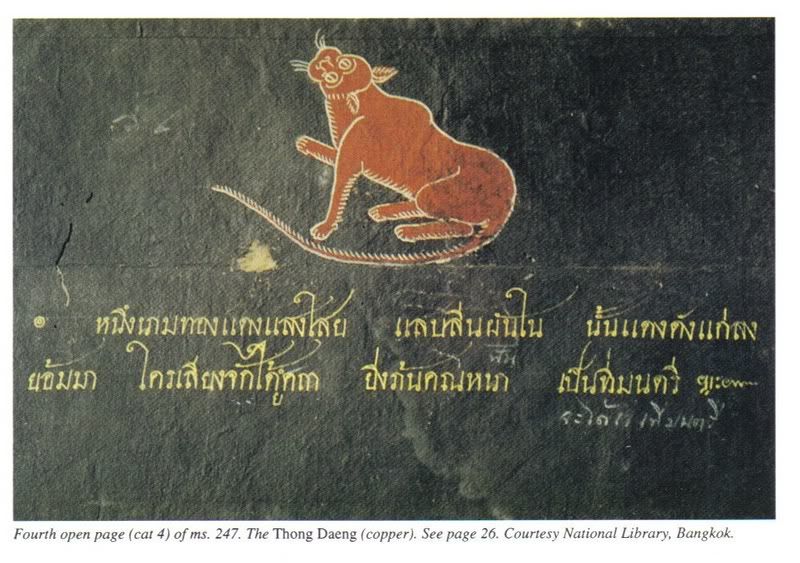
If you didn't already guess, I must warn you I am a cat lover. My previous post about Ms. Pook prompted me to work on this post about cats in ancient thai manuscripts, a post I intended to write a few years back but got sidetracked by life.
The pictures posted here are scanned from "The Legend of Siamese Cats" written by Martin R. Clutterbuck, printed by White Lotus Press (my favorite publisher). I was quite amused to find, when I googled for the book, that it was being offered for $1,711 at amazon.com. It seems that this book I bought in 1998 has become a rare and out of print book. (I've got to remember to never give up any of my White Lotus books.)
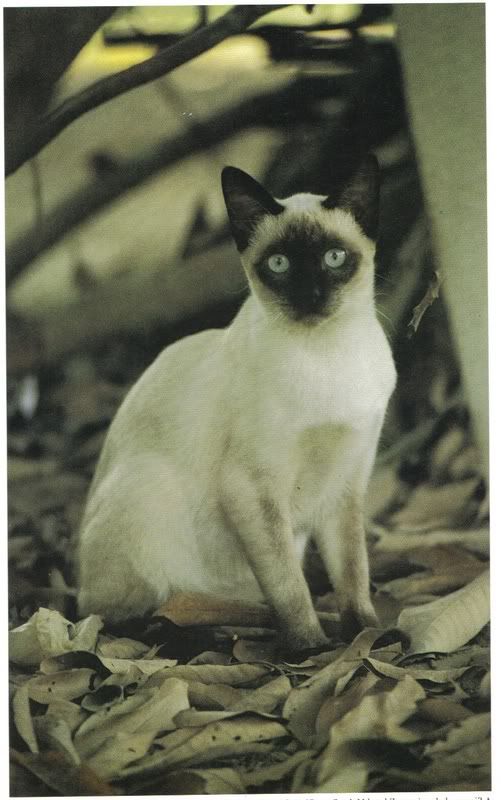 "Tamra Maew" (cat treatise or cat poems) were found in old thai manuscripts known as "smut khoi", rice paper books. The ones M. Clutterbuck used for his research were between 100-200 years old. However, research I've done previously on ancient literature revealed that manuscripts were copied by hand and passed down generation by generation in the family. They may date much older than those 100-200 years old. Another popular form of preserving ancient literature was with palm leaf manuscripts in which most buddhist literature is preserved. These are also copied by hand, and are said to last 600-700 years with correct preservation.
"Tamra Maew" (cat treatise or cat poems) were found in old thai manuscripts known as "smut khoi", rice paper books. The ones M. Clutterbuck used for his research were between 100-200 years old. However, research I've done previously on ancient literature revealed that manuscripts were copied by hand and passed down generation by generation in the family. They may date much older than those 100-200 years old. Another popular form of preserving ancient literature was with palm leaf manuscripts in which most buddhist literature is preserved. These are also copied by hand, and are said to last 600-700 years with correct preservation.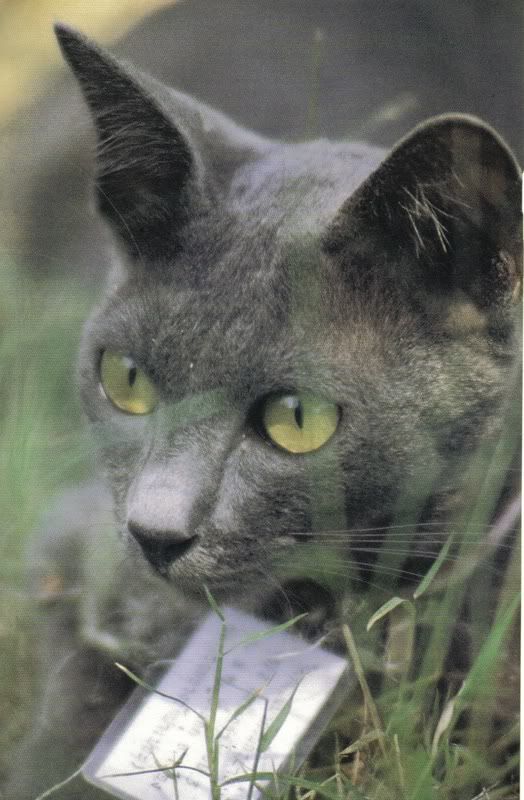
Some pictures from original khoi manuscripts can be found in the "Smud Khoi of cats from khoratworld.com where you can find info about the khorat cats.
The studies done wtih tamra maew reveal that these cat poems flourished from at least the 17th century. The first Siamese cats travelled to Europe around the 1860s when cat shows in Victorian England were already popular. The Siamese color-pointed, good humored, "talkative" and intelligent cat was an instant hit.
In Thailand, or rather Siam in those days, the (brown pointed) siamese cat was only one of a group of designated "auspicious" and lucky cats to have around for cat fanciers. King Chulalongkorn himself searched out cats with good appearances. The Korat cat, also known as "Si-sawat" was named "Korat" when King Chulalongkorn found them in this new region. In that newly annexed Northeastern region, there was a rain calling ceremony where a cat in a bamboo cage was paraded through the village, sprinkled with water and then set free.

I witnessed one such ceremony as a teenager visiting the Boon Bang Fai festival in Yasothorn in the early 80s. The "bang fai" or sky rockets, also a rain calling ritual, was already attracting more attention than the cat parade at that time. I don't think any villages perform the cat parade ritual anymore.
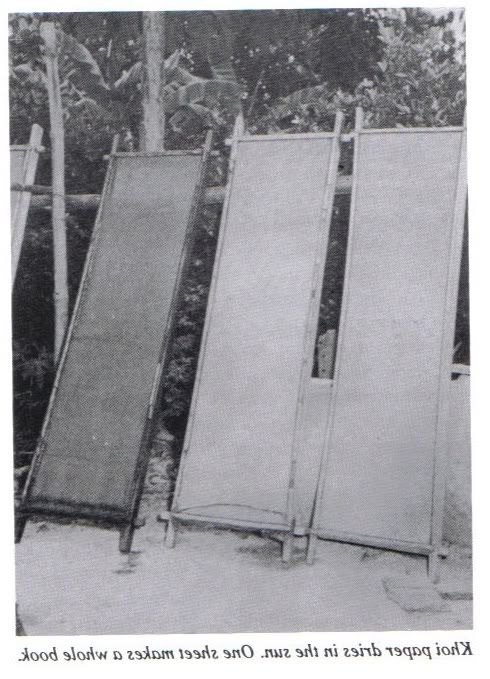 The samut khoi are made from the pulp of the khoi tree (streblus asper). This small shrub grows easily in the boggy and well-watered fruit plantations of Thailand's central plains. The stripped bark is pounded into pulp with wooden mallets: this is then poured over a wire mesh and dried in the sun. The resulting sheet is removed from the mesh and polished with stones before being folded concertina fashion to create a whole book from a single sheet. Nowadays, they are produced as luxury paper for soveneir making and exports.
The samut khoi are made from the pulp of the khoi tree (streblus asper). This small shrub grows easily in the boggy and well-watered fruit plantations of Thailand's central plains. The stripped bark is pounded into pulp with wooden mallets: this is then poured over a wire mesh and dried in the sun. The resulting sheet is removed from the mesh and polished with stones before being folded concertina fashion to create a whole book from a single sheet. Nowadays, they are produced as luxury paper for soveneir making and exports.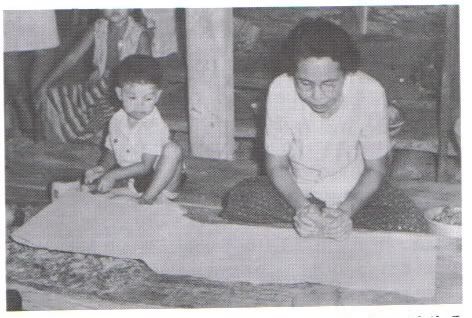 The sheet can be blackened with the charcoal of the sanoh khang khok tree to create the black "samut thai dam". If bleached with lime in the pulping process a white "samut thai khao" is produced. The black books were written on with a pastel-like white pencil, which is usually written over with yellow ink made from gambage for permanence. The white books were written on with black ink. Chiangmai-chiangrai.com has a short page about the making of khoi paper books.
The sheet can be blackened with the charcoal of the sanoh khang khok tree to create the black "samut thai dam". If bleached with lime in the pulping process a white "samut thai khao" is produced. The black books were written on with a pastel-like white pencil, which is usually written over with yellow ink made from gambage for permanence. The white books were written on with black ink. Chiangmai-chiangrai.com has a short page about the making of khoi paper books.Chiangmai Mail, the first English language newspaper from Chiangmai, has an interview with Mr. Ed Rose who is a cat lover and became well-known for the numerous siamese cats he takes care of.
Prestwick-Beresford Old-Style Siamese
Breed Preservation Society has a page on history of siamese cat breeding in US.
Coming up next will be one of the cat poems.
No comments:
Post a Comment